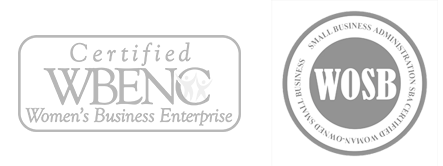ONE PERCENT. That’s how many elevator pitches are unique and inspired. Fortunately, though, it’s relatively easy to correct a bad one. Elevator pitches are concise, planned and practiced descriptions about your company that your mother should be able to understand in the time it would take to ride an elevator — about 60 seconds.
It’s a vital tool for creating awareness and gaining the interest of a prospect. It can be used in networking settings, at social events, during meetings with new prospects, or when anyone says, “What do you do?” Since so few compelling pitches are being delivered, having a strong elevator pitch is a fairly simple, no-cost way to stand miles apart from your competitors. Dynamic, inspired elevator pitches deliver the big message that sets your company apart, but it should also capture someone’s imagination. It should be filled with impact, personality and intensity. Most importantly, it should leave the listener asking to learn more.
Strong, dynamic elevator pitches have four key ingredients.
#1: Your elevator pitch should include a brief description of what you do, without using any jargon. Mine starts out very simply — “I’m a sales coach and marketer.” Titles aren’t important. Your objective isn’t to impress prospects with your credentials, but to leave your prospect with a clear understanding of what you do in language they might actually understand and remember. Don’t just explain what you do for the company; make it personal.
#2: Your elevator pitch should also describe specifically what you do for your clients in distinct language. Make sure you avoid vague, overused, and self-congratulatory statements, like when someone says, “We solve our client’s problems,” or “We form a partnership with our customers.” Instead of using tired clichés, consider offering specific reasons why your clients like your company. Start with something straight-forward, like “Our clients hire us because….”
#3: Next, you should provide a real example of how your company helped a customer overcome a challenge, explaining your points of differentiation in the process. You want to share a vibrant story of how you helped one, particular customer; so don’t list everything you could ever possibly do to help a client. However, it’s very important that the story you choose conveys what makes your company different from competitors.
#4: Finally, you should illustrate the impact you had for the client you just mentioned. It helps if the results that you generated for that client are tangible — like a specific amount of cost savings, the exact amount of revenue you generated, or the percentage efficiency you helped the client gain.
Once you’ve developed your elevator pitch, rehearse it. Once you’ve finished rehearsing, rehearse again, and then rehearse some more. Don’t wing it. You want your pitch to sound conversational, but it needs to be polished. Remember that you have one shot of capturing your prospects’ imaginations, and piquing their interest in what you do. Make every single word count.
Even the most well-crafted elevator pitch will fall flat without a strong, engaging delivery. Deliver yours with inflection and enthusiasm, being sure to connect with your audience by varying the volume and pace of key phrases in your pitch for emphasis. Pitch with presence and conviction.
Believe in your pitch, or else no one else will. Pitch like your livelihood depends on it, because it does.
This blog was written by RedRover’s CEO & Founder, Lori Turner-Wilson.







